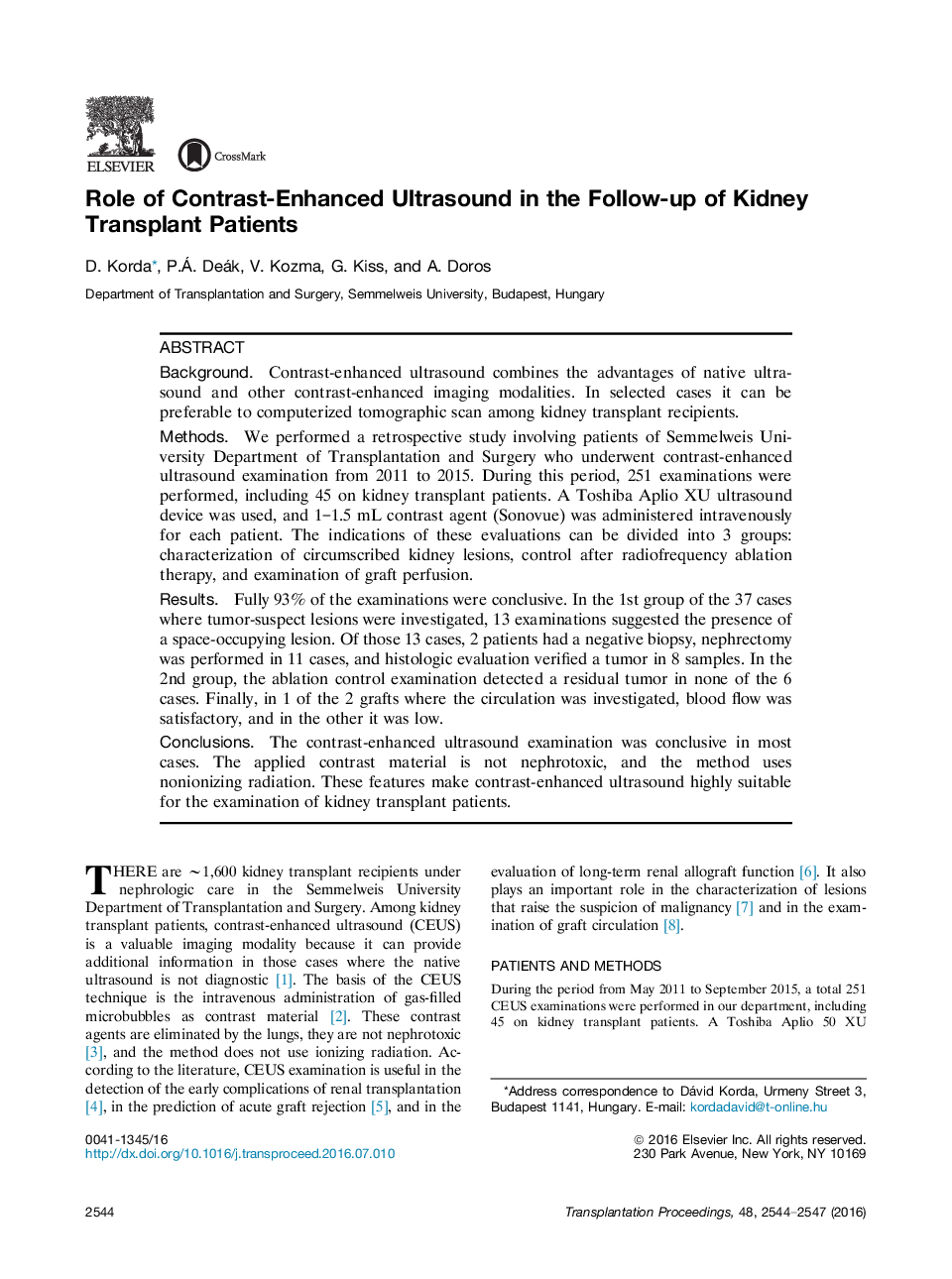| Article ID | Journal | Published Year | Pages | File Type |
|---|---|---|---|---|
| 5729413 | Transplantation Proceedings | 2016 | 4 Pages |
BackgroundContrast-enhanced ultrasound combines the advantages of native ultrasound and other contrast-enhanced imaging modalities. In selected cases it can be preferable to computerized tomographic scan among kidney transplant recipients.MethodsWe performed a retrospective study involving patients of Semmelweis University Department of Transplantation and Surgery who underwent contrast-enhanced ultrasound examination from 2011 to 2015. During this period, 251 examinations were performed, including 45 on kidney transplant patients. A Toshiba Aplio XU ultrasound device was used, and 1-1.5 mL contrast agent (Sonovue) was administered intravenously for each patient. The indications of these evaluations can be divided into 3 groups: characterization of circumscribed kidney lesions, control after radiofrequency ablation therapy, and examination of graft perfusion.ResultsFully 93% of the examinations were conclusive. In the 1st group of the 37 cases where tumor-suspect lesions were investigated, 13 examinations suggested the presence of a space-occupying lesion. Of those 13 cases, 2 patients had a negative biopsy, nephrectomy was performed in 11 cases, and histologic evaluation verified a tumor in 8 samples. In the 2nd group, the ablation control examination detected a residual tumor in none of the 6 cases. Finally, in 1 of the 2 grafts where the circulation was investigated, blood flow was satisfactory, and in the other it was low.ConclusionsThe contrast-enhanced ultrasound examination was conclusive in most cases. The applied contrast material is not nephrotoxic, and the method uses nonionizing radiation. These features make contrast-enhanced ultrasound highly suitable for the examination of kidney transplant patients.
